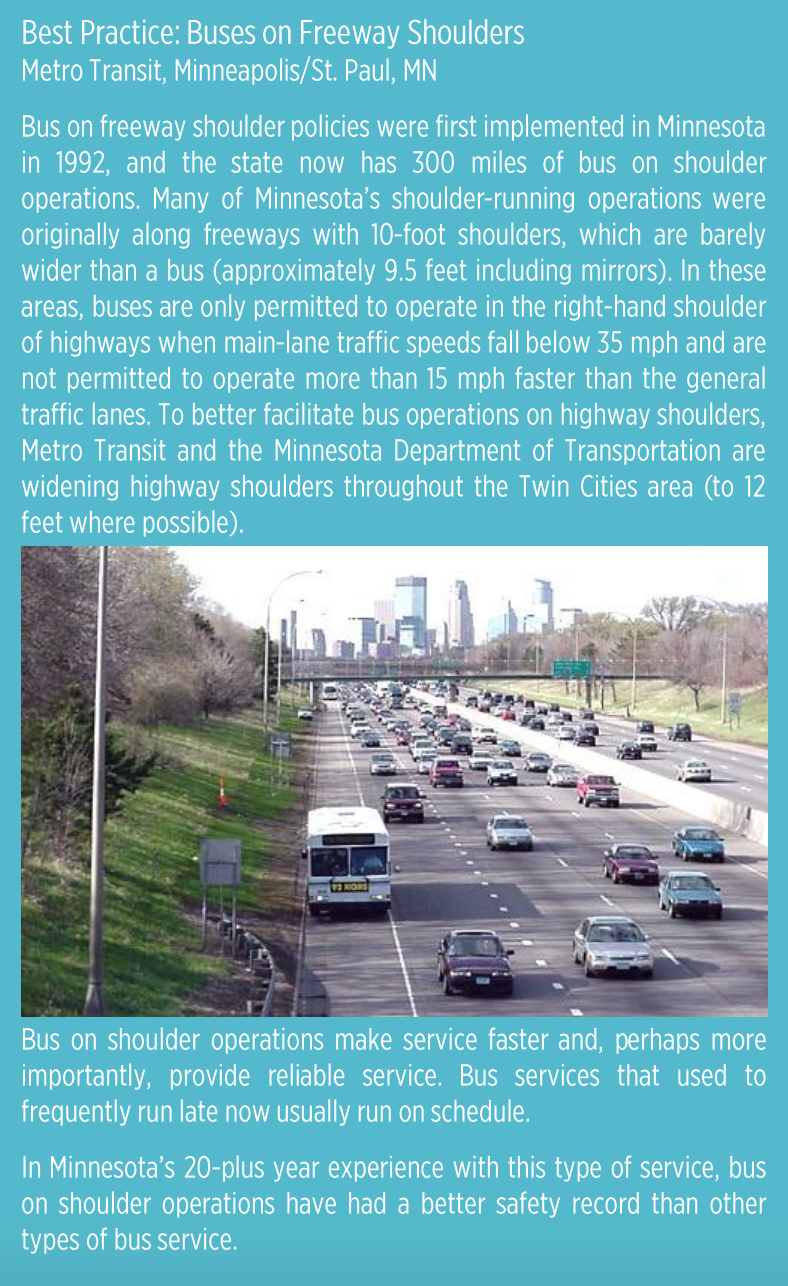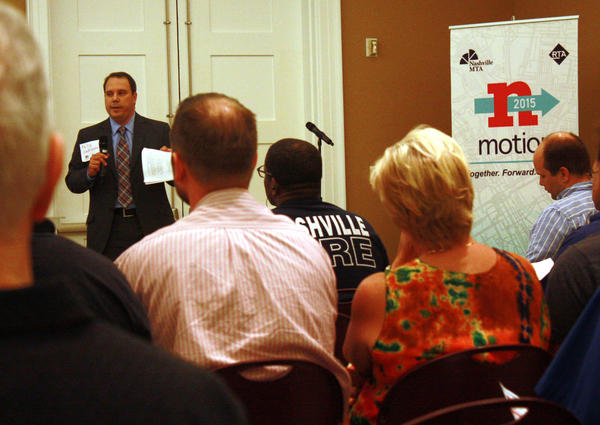
There’s growing momentum in Middle Tennessee to create a bus rapid transit system, or BRT, along the interstates. Often referred to as “freeway BRT,” the idea is to let buses collect passengers and pass up traffic by driving on the shoulder or in dedicated lanes.
Nashville Metropolitan Transit Authority’s Felix Castrodad
, director of planning and grants, says at least a dozen states allow this, including Georgia and North Carolina.
And, backed by the ideas in the latest nMotion policy paper, He says it’s probably time for buses to use the shoulder as a way to reduce congestion around Nashville.
“That advantage is that it’s relatively cheaper and quicker to implement,” he said. “It’s proven in other places. In Minneapolis, for example, they’ve been doing it for over 20 years and only had one [injury] accident in all that history.”
Some challenges come to mind — like buses navigating around disabled vehicles or emergency responders — but Castrodad said other states set procedures for drivers to overcome those situations. He said pavement condition and conflict points, like interchanges and ramps, might need modification.
More:
nMotion report on freeway BRT
Castrodad said the response to freeway BRT at public hearings has mostly been residents wondering why it hasn’t already been implemented — a “no-brainer,” he said. He notes that officials in counties surrounding Nashville have been enthusiastic.
We had to pull out the extra seats at our Williamson Co. Transit Conversation. Great turnout. Engaged group.
pic.twitter.com/wmrcgsNB64— nMotion (@NMotion2015)
November 12, 2015
Meanwhile, Tennessee Department of Transportation officials are also warming to the idea of freeway BRT, especially after studying congestion on Interstate 24.
“We think it’s feasible,” said Toks Omishakin, TDOT deputy commissioner for environment and planning. “We need to be much more flexible than we have in the past on solutions like this.”
In terms of cost, BRT bus stops, parking lots and other infrastructure might cost $30 million — but that’s a tiny fraction of an estimated $900 million to widen I-24, he said.
What About HOV Lanes?
Another option to help freeway buses is to give them the HOV “carpool” lanes, which for years have been questioned by drivers and officials for low levels of enforcement when solo drivers use them.
Omishakin said changing the HOV system hasn’t been ruled out. But because it was first created in the 1990s with federal funding, Tennessee may not be able to make the change on its own.
Plus, those lanes don’t currently travel all the way to downtown.

Of note, he said enforcing the current HOV rules does come with something of a catch-22:
“If fully enforced, what we’ve seen is it actually has the counter-effect to what it’s actually supposed to do. When a law enforcement officer pulls somebody over, you start to see traffic back up,” Omishakin said.
Add in the safety issue of officers interacting near highway traffic, and the idea of maintaining the current HOV system takes a hit, possibly tipping the argument toward converting them to bus use. (Yet another option would be a camera system designed to enforce the HOV lanes.)
Bridging The ‘Last Mile’
One other challenge would be getting riders to their final destinations once the BRT gets downtown.
Other than shuttle buses, officials are exploring formal agreements with rideshare companies like Uber and Lyft, and have outlined a number of strategies in
a short policy paper dedicated completely to last-mile ideas.
Right now, Music City Star train commuters like Andy Borchers are accustomed to making connections once they get downtown — but he said he worries about transfers deterring new riders.
“Say I had a BRT going down 24 and it got me downtown somehow. How do I get the last half-mile from wherever the BRT ends to where I actually work?” he asked. “That would require some sort of shuttle service — maybe cooperation from employers.”
Borchers goes from train to shuttle to bus to get to his teaching job at Lipscomb University. Still, he sees freeway BRT as seemingly “the fastest way to get a significant impact,” he said.
Borchers was one of several people involved in
an online discussion board about freeway buses.



